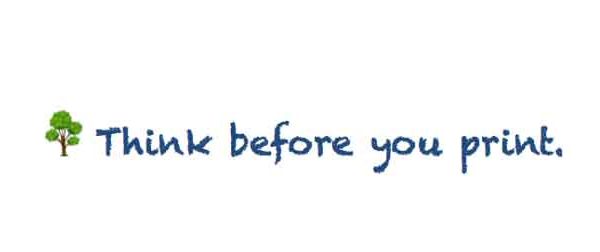Going Paperless at Work

What does it mean to go paperless in your office? While it sounds very noble, depending on your business type and internal processes it can be daunting to consider. Further, if you’re like me or other co-workers I’ve spoken with, you just prefer not to. Personally, I make excuses about wanting something physical to hold on to and mark up. Or, if it’s not in a stack in front of me, it disappears from my brain. (Out of sight, out of mind!) One thing I know is that unless I try to make a change all I’m making is excuses.
Psychologists explain behavior change as a series of changes: pre-contemplation, contemplation, determination, action, maintenance. Don’t worry – I’m not going to launch into an extended metaphor about our addiction to paper. What I’d like to discuss though is how to move your business toward action. There are endless articles out there about going paperless – go ahead, Google away! Personally I think you first should identify the ways you use paper. Now review your list and listen to your thoughts on why you do these things and ask yourself if there’s evidence to support each belief. This is how you move from pre-contemplation to contemplation. If you can break down any barriers you have to making a change, even one, you have taken a step toward contemplating change. Now what does it take to change that one behavior? Maybe it’s a personal commitment to stop printing things you need to review or edit; that’s what I’m going to do. The next step will be to act and maintain that behavior.
Tim Jones at Astir Agency shared with me his methods for reducing paper usage. He also noted that being completely paper free is probably not going to happen. So, maybe the first step is to think paper reduction instead of paperless. Tim says he flags emails for later review instead of printing them. Further, he uses Asana for project management and Wunderlist for short term to-do lists. Adding some simple tools or apps could be an easy first step toward reducing paper usage in your business.
Here at The Environmental Center we take a variety of steps in the office to reduce our paper usage, or at least to re-use whatever paper we can. For instance, we have a second printer that we keep loaded with reusable paper that still has one blank side. Whenever possible, we print double sided, and we use a server to keep a digital archive and store as much as we can digitally instead of on paper. And, we give our donors the option to save paper and receive digital thank you letters. Finally, we have a volunteer who makes calls every week to all our junk mail senders and asks that they remove us from their list. You can find tips here on how to opt out of junk mail.
Ultimately, the most important thing to note is that if you start making changes personally or in your business systems, you might just influence your colleagues, too. You can be a leader! Take a first step to reduce your paper usage and waste, and talk about it. People are way more likely to change their behavior if they see someone else doing if first. If you make reducing paper usage part of your business culture, both you and your team will make choices with that in mind. Here are a few more ideas that might be helpful in finding the right way to reduce your paper usage:
- Use collaboration software like Google Docs, Office 365 or review settings in Microsoft Office to collaborate and edit documents digitally.
- Get rid of your fax machine, or take your faxing digital. If you have a fax machine in the office I would guess you get 99% more spam than authentic faxes. Going digital, even if you only receive digitally, eliminates all that waste.
- If you give presentations, avoid giving every attendee a 30-page printout of your slides! Personally, I get more out of taking my own notes in my notebook than I do by adding notes next to pictures of the slides.
- Check out this article for many more ideas.
Good luck! Thank you in advance for your efforts, whatever they may be, to reduce your paper use.